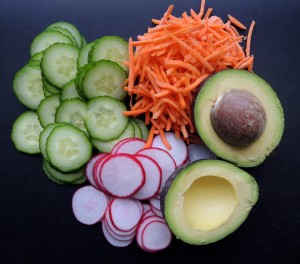by bringmebliss | Jan 19, 2016 | Inspiration
 To live intentionally takes an internal fire that is built by you and God. Every fire needs kindling. The kindling usually comes in the form of ideas…stirrings of heart thoughts that form a dream. It’s a co-creative experience between you and God.
To live intentionally takes an internal fire that is built by you and God. Every fire needs kindling. The kindling usually comes in the form of ideas…stirrings of heart thoughts that form a dream. It’s a co-creative experience between you and God.
This is my year of living intentionally. It’s not that I haven’t lived with intention before, it’s just now I’m making a declaration – a manifesto of sorts – to more fully live out my dharma. My intention is to inspire as many people as I can for positive growth and change – even with myself. My intention is to use my God-given gifts to manifest more goodness in the world. I want to spread more of the fruit of the Spirit. Galatians 5:22-23 “But the Fruit of the Spirit is Love, Joy, Peace, Patience, Kindness, Goodness, Faithfulness, Gentleness, Self-Control. Against such things there is no law.”
In order to live intentionally, it’s a good idea to define what that means. Intention is an act or instance of determining mentally upon some action or result. It is to have purpose or attitude toward the effect of one’s actions or conduct. There is meaning and significance in being intentional.
Being intentional is being on purpose. It includes designing or planning. It means to be deliberate in action – carefully weighed and considered, studied.
The word dharma is difficult to define because it has a variety of meanings stemming from Eastern Philosophy. For the purpose of this manifesto, we’ll say that dharma is all the actions a person takes which align with universal laws and the internal makeup, gifts and abilities a person owns. The ability to live out one’s dharma requires some self-actualization, self-study and self-growth. Oftentimes, life experiences (much of which is out of our control), can hamper self-growth. People who are in survival mode tend to grow much slower and have a more difficult time connecting with their own hearts. But it’s not impossible and I want to encourage you to dig deep – even and especially if you are struggling with matters that prevent you from doing exactly what you want at this time.
I have known people who have an innate ability to hone in on their gifts and use them from an early age. I see this as pretty rare though. A person has to be really emotionally even and sure of themselves, anchored by strong self-esteem to build a dream life at a young age. Don’t allow yourself to envy these people. We are each on an individual path with different things to learn. Some of us are late bloomers – and I include myself in that category!
There is a series of steps that you mentally and physically have to take to make something come to fruition. Sometimes it requires reading or studying. Sometimes it requires developing a new skill.
Here are 5 Steps you can take to begin living intentionally – on purpose – every day of your life.
1) Every day, acknowledge God, His sovereign care over your life and say a prayer of gratitude for this day. Thank God for your blessings – all the good in your life. Ask for wisdom and light to be infused into your consciousness throughout the day, so you can be directed from that light within. Ask for guidance and what it is you are supposed to do to manifest more of the Fruit of the Spirit – Love, Joy, Peace, Patience, Kindness, Goodness, Gentleness, Faithfulness, Self-Control. Do this every day.
2) Develop a deeper awareness of your body – the sensations you feel as you go about your day. Also, begin to notice your feelings more – your emotional body. One way to do this is to practice yoga. Yoga helps to develop a keen awareness of various parts of your body at different times. Hatha yoga is the physical or purification process for strengthening and stretching the body, creating better circulation. It also helps to calm the mind.
An even quicker way to build awareness is to sit in meditation. Here you can breathe deep, scan your body, notice sensations and quiet the mind. Somehow quieting the mind allows divine thoughts to enter and act as guide and counselor. It gives you an opportunity to just be you without any outside influence or stimulation. This quiet time is necessary to get in touch with your heart, mind and emotions.
3) Write down on paper or type on a computer your thoughts. Share your innermost thoughts, dreams and desires. Write down why you feel so moved to have a certain dream. Write down the details of how you envision your life in its fullest capacity. Don’t hold back. Dig deep into your heart and examine what is most meaningful to you. Don’t hesitate to include your thoughts of what you think might be holding you back. It’s good to acknowledge your innermost thoughts – even if they are negative. You can always adjust your thoughts based on reality. Keep in mind that many of our thoughts are truly erroneous. Here’s where you need to examine your thoughts regularly and determine if they align with reality or not.
4) Set a course and plan of action. Determine what it is you want and how you’re going to get it. If you want joy on a more regular basis, plan out how you will attain more joy. It could be tethered to your spiritual pursuits; it may just be you want to experience a certain type of vacation. Perhaps you want to lose weight (get healthy), or maybe you want to build a dream business. Something as simple as getting back to nature can bring you more joy. Whatever you are dreaming about, list what it will take to achieve your dream. You may have to go back to school, take a course, hire a health coach or give something up to save for what you really want. I recently talked to a young mother who is currently a nurse. She has a dream of becoming a nurse practitioner. She knows it’s going to take another 4 years to get that degree. Right now, she is in the process of figuring out how she’s going to work part-time and go to school full-time while caring for her baby girl. Luckily she has help from her mother with her daughter, but it’s going to be a tough road. Still, she’s determined this is what she wants and is going to figure out how to do it.
5) Take ACTION. Remember ACTION is the key to following through with deliberateness. For example, if you want to gain more wisdom, find 5 books of Wisdom Literature. Begin reading daily passages to inspire you. If you’ve always wanted to learn to speak Spanish, buy that course and start utilizing it, memorizing and practicing your new language. If you want to lose weight, begin by studying yourself in relation to your eating and physical habits. Know that your body, mind and emotions are so tightly interconnected that they affect each other. Your thoughts affect your physical body. Your physical experiences affect your thoughts. Your emotions are messages from your brain that affect the body. Getting to know yourself and learning how to overcome any negative thoughts about your dreams is part of the growing process. Take the necessary action steps to achieve your goals.
Here’s an example of living intentionally. Doug decides to run a marathon. He thinks he can do it. He’s done it before but would like to better his time. Doug sets a plan to train for the marathon by running a certain number of miles per day. He gets up before work and runs. By marathon time, Doug is ready. He runs the marathon, beating his previous time. He wasn’t competing with others; he was competing with himself. Now, Doug feels empowered to do just about anything because he knows that if he puts his mind to it, he can accomplish what he sets his mind to doing.
No matter what your goal or dream is, you will have to be deliberate, be on purpose and set the course. The key to attaining your goals is in the action. Just Do It! – as Nike is so famous for declaring.
If you are already happy doing what you are doing, good for you! If not, spend a few hours, days or weeks with yourself assessing your life, what you want and how you’re going to get it. Remember, it’s a process. Not to be rushed, but to be put in motion.
In the event you are seeking financial freedom and are interested in working with someone who can teach you how to get that through the ever growing health-care market, check out my Work With Me page. This is a heart-centered business where you can impact hundreds or even thousands of people to live healthier lives. Let me know how I can help you get started fulfilling your biggest dreams!
by bringmebliss | Dec 19, 2015 | Mind/Body
Check out this Mindfulness Podcast that my friend Yu-Jin from Healthy Positive Lifestyle Network produced! He interviewed me on his very popular iTunes podcast program and it was my pleasure to talk with him about what I am passionate about: Emotional Freedom through the mindfulness practice of yoga with aromatherapy!

by bringmebliss | Dec 10, 2015 | Fun Food
Stave off hunger during your workday! Bring healthy snacks to work.
One of the most difficult aspects of sticking to a balanced diet is keeping that balance when snacking at work. Long days at work often need to be broken up, and people snack to keep their energy levels up or often just to break up the day. While it can be quite easy to carefully plan the main meals of your day, planning your in between meal snacks can often prove challenging.
Let’s just commit, shall we?
With a little preparation and the right mind-set, you can ensure that those mid-morning or late afternoon snacks don’t ruin your healthy diet! Let’s take a look at a number of simple snacks that are easy to prepare and tasty to eat! I like to have a little protein in my snacks to keep the blood sugar level even, so if you have a carb, pair it up with a little protein.
1. Mixed Fruit
Fruit is an excellent source of vitamins and nutrients, and yet it’s something that most of us don’t eat enough. Bringing an apple or banana in to work involves no preparation, little cost, and is a tasty way of boosting your energy levels. For those looking for a little more variety, why not prepare a fruit salad. Chop up your favorite fruit or berries and you can have a delicious treat that won’t mess up your daily diet! Bring some almonds, walnuts or pecans and keep them in your desk. Pair up your fruit with a couple of nuts to stave off hunger. Or, keep some almond butter at your desk and apply some to your apple slices – yum!

2. Yogurt
Yogurt can be an excellent source of probiotics, vital for maintaining a healthy gut. Much like fruit, yogurts involve little to no preparation, and also offers a range of flavors for a varied experience from day to day. Similarly, by choosing healthy yogurts, you can ensure that your afternoon snack doesn’t ruin your appetite, nor your waist line! Add some flax seed, hemp hearts or chia for a little protein and added health benefits. You can add your own ingredients to plain yogurt. For example, add a little local honey and some lemon, lime or orange essential oil. This makes a sweet, low-fat and flavorful dip!

3. Smoothies
Smoothies can be a superb way of treating yourself during the working day. By preparing a smoothie to bring to work, you can ensure that you are getting enough fruit and veggies in your diet, and give yourself an excellent energy boost when the afternoon lag sets in! Smoothies also allow you to vary your snack from day to day, ensuring that every day feels like a new treat! They can also be stored in the fridge for a couple of days so bring enough to last you 2 days. Add some toasted sunflower seeds for protein and a little nutty taste.
Here’s one of my favorite smoothies:
Chocolate Cherry Smoothie Favorite
handful of spinach or kale or other greens
handful of frozen dark, pitted cherries
1 Tablespoon raw cacao powder
3-4 pitted madjool dates
1 drop liquid Stevia (optional)
1 Tablespoon hemp seed
1 cup water
handful ice
Blend until smooth.

4. Salad Ingredients
Salads don’t have to be grand, extravagant affairs. Rather than making a “salad”, consider bringing a few items that you might put in a salad and have them on hand for snacking during the day. A simple salad can consist of a hard-boiled egg and just a few of your favorite vegetables. The preparation time for a salad snack is minimal, but the benefits are huge. Tasty and healthy, salads are one of the most under-utilized workplace snacks. Keep in a container some of the following: Grape tomatoes, sliced cucumbers, snap peas, thin, sliced carrots and celery. Pair with some small slices of cheddar or low-fat swiss cheese.

If you are a sweet eater, bring some dark chocolate (70% or higher cacao) and have a small piece when you feel like eating cookies and cake! Dark chocolate is actually good for you and can help reduce your cravings for high processed sugar snacks.
When planning your week of meals for you and your family, consider your day and how snacking can be of assistance with your energy. Then plan to include that in your shopping so you’ll be ready to easily pull out those items for your work day.
Keep an eye out for the 30 Day Clean Eating Challenge coming soon!

by bringmebliss | Dec 7, 2015 | Fun Food

Do you know why food/eating experts promote eating seasonal foods? It’s because it makes sense from several different standpoints. Many restaurant menus offer “seasonal” dishes which usually refer to the types of vegetables that are in season. Supermarkets offer fruits and veggies in season because they are in abundance at that particular time of year. Local, seasonal foods are all around us, yet we often remain ignorant about why we should eat them.
There are 3 reasons to eat local, seasonal food. Let’s look at those reasons so we feel more empowered to make good shopping choices.
1 – It is generally cheaper.
Seasonal foods are cheaper in season versus out of season for the simple reason that they are in abundance. When supply is plenty and demand is moderate, prices are reasonable and affordable. Contrast this with a food that is out of season, where supply is low. For example, strawberries are mostly in season in the Spring. This is why you see loads of strawberries and shortcakes promoted heavily that time of year. (For health reasons, I recommend staying away from the shortcakes!) Prices are low in the Spring and Summer, but as we move into Fall, the prices rise.
In the Fall, a variety of squash make it into the store in droves. This is because we harvest that type of vegetable in the Fall. Since we have an abundance of squash, prices will reflect the supply.
The cost of seasonal produce is almost always cheaper than foods that are produced out of season. This is one of the biggest reasons why people should consider shopping seasonally. There are huge savings to be had by simply being aware of what is scarce and what is in great supply.
2 – Food tastes better in season.
Plants have life cycles and they peak at a certain point in that life cycle. This goes for fruits and vegetable plants as well as flowers, trees, shrubs and bushes. At some stage in the development of the plant, there will be the most nutritional benefit and this is when the fruit or vegetable should be harvested and eaten.
If you buy produce locally, you are more likely to get really fresh produce. Fresh food tastes better than food that has had to travel, losing its freshness on the way to the supermarket. Also, food that is in season (such as watermelon in the summer) is going to taste best when you eat it shortly after it has been picked. I recently picked up a half watermelon at the grocery store (it’s December as of this writing). I had some for breakfast and was not surprised when it just didn’t have it’s full mouth-watering, sweet flavor. It was total proof that buying out of season can have disappointing results.
Food tastes its best when it is freshest, and it will undoubtedly be at its freshest when it’s in season! There is also the very real consideration that many in-season foods can generally be sourced locally. “Farm to Table” is a phrase that was coined to describe local foods being served fresh and directly from the source with no middleman (such as a wholesaler, distributor or supermarket).
Start noticing all the Fall and Winter vegetables and consider making some new soups or dishes with these veggies.
3 – Food is healthier in season.
The body needs different kinds of fuel at different times of the year. We eat more fats in the winter to build a thermal blanket in our systems which help to keep us warm. And we tend to make a lot of hot, healthy soups and chilis in the winter because the heat helps to regulate our body temperature. Consider making roasted butternut squash soup in the Fall and notice how flavorful this fresh squash vegetable can be with a few added ingredients.
Just to help you out here:
Roasted Butternut Squash Soup
Ingredients
Cubed butternut squash
1 onion, sliced
3-5 whole, peeled garlic cloves
S & P
Extra virgin olive oil
Cayenne pepper (optional)
Directions
In a bowl, combine squash, onion, garlic, olive oil (enough to coat vegetables), S & P to taste and cayenne pepper (a few shakes). Lay out on a lined, foiled baking sheet. Bake for 20 minutes at 350; stir around and bake another 15-20 minutes.
Scoop a portion of the mixture into a blender, add a little water and blend. Poor into another pot and scoop the remaining portion of the mixture into blender, repeating the previous step. Once soup is all combined, keep warm until ready to serve. Top with toasted pepitas (optional).

We already know that a balanced diet consists of fresh, unrefined foods that haven’t been processed(food additives, etc). Local, seasonal foods are farmed up the road and entirely unprocessed. Local, seasonal foods give you the best chance to get the best nutritional value out of your food. And the brilliant thing about eating seasonally is that your diet changes throughout the year! As a result, seasonal eaters get a huge variety in their diet further enhancing the health benefits of seasonal eating.
Eating local, seasonal foods 1) is more affordable, 2) tastes better and 3) is healthier for you. When you consider these benefits, it simply makes sense to get with the seasonal program and enjoy the variety that comes with changing your food selections throughout the year.
Keep an eye out for the 30 Day Clean Eating Challenge coming soon!
In the meantime, let’s connect on facebook! Click the logo below.

by bringmebliss | Nov 17, 2015 | Fun Food

Coyote Caviar is a Southwest appetizer that is a big hit at parties! There is nothing like this side dish! If you like Southwest and Spicy, give this a try.
Ingredients
1 (15 oz) can black beans, drained, rinsed
1 (4 oz) can chopped black olives, drained
1/4 cup chopped onion
1 (4 oz0 can chopped green chiles
1 clove garlic, shopped (I might do 2 here.)
1/4 cup chopped cilantro
2 tablespoons vegetable oil
2 tablespoons freshly squeezed lime juice
2 teaspoons chili powder
1/4 teaspoon salt
1/4 teaspoon crushed red pepper flakes
1/4 teaspoon cumin (I always go for a little more cumin.)
1 teaspoon black pepper (Yes, a whole teaspoon…it’s awesome!)
8 oz cream cheese, softened
2 green onions, sliced
Mix all ingredients up to the cream cheese. Let marinate for 4 hours or more in the refrigerator. Spread cream cheese on a plate; top with the mixture and top the mixture with the sliced green onions. (optional)
Serve with tortilla chips. OMG! This is my absolute favorite appetizer of all time.
Reference: “Reflections Under the Sun – The Brightest Collection of Recipes from the Junior League of Phoenix” 1999
 To live intentionally takes an internal fire that is built by you and God. Every fire needs kindling. The kindling usually comes in the form of ideas…stirrings of heart thoughts that form a dream. It’s a co-creative experience between you and God.
To live intentionally takes an internal fire that is built by you and God. Every fire needs kindling. The kindling usually comes in the form of ideas…stirrings of heart thoughts that form a dream. It’s a co-creative experience between you and God.









